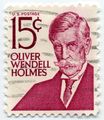 Dear Diary: What I write down is important!
Dear Diary: What I write down is important!In addition to things covered in recent blog postings relating to planning to improve your investment returns, there's also another thing you can do.
And that is to keep an investment diary - what you bought, when, and why (most important is why, since your statements will tell you the what and when). Write down a bit about what attracted you to that stock/ETF/investment, and what your "exit point" is. There's almost always an "exit point", even for the most conservative investments - perhaps it's when/if the yield falls below a certain level. If you're a more active trader and trade in small cap stocks, then you are probably looking for a certain pe ratio to be achieved ... write it down.
Review your writing occasionally. This will help you to stay the course where needed, or to remember where you thought was a good point to get out (before you got all those huge gains and got married to the stock!). It can help foster a better perspective.
In addition, it can help simply to write down when you are thinking of changing your portfolio, and getting your thoughts straight before doing anything drastic. This definitely helped me in the days and weeks following hurricane Katrina, when I initially felt the economic effects might be much worse than originally envisioned.
Finally, it can also help in your annual review of what you did right and can get even better at, and what you need to mitigate - you'll have a record that you can peruse with detachment on your thoughts and worries of the day.
One last thing we'll cover later before moving onto another topic is: "scrapbooking". More later ...
JW
The Confused Capitalist



























